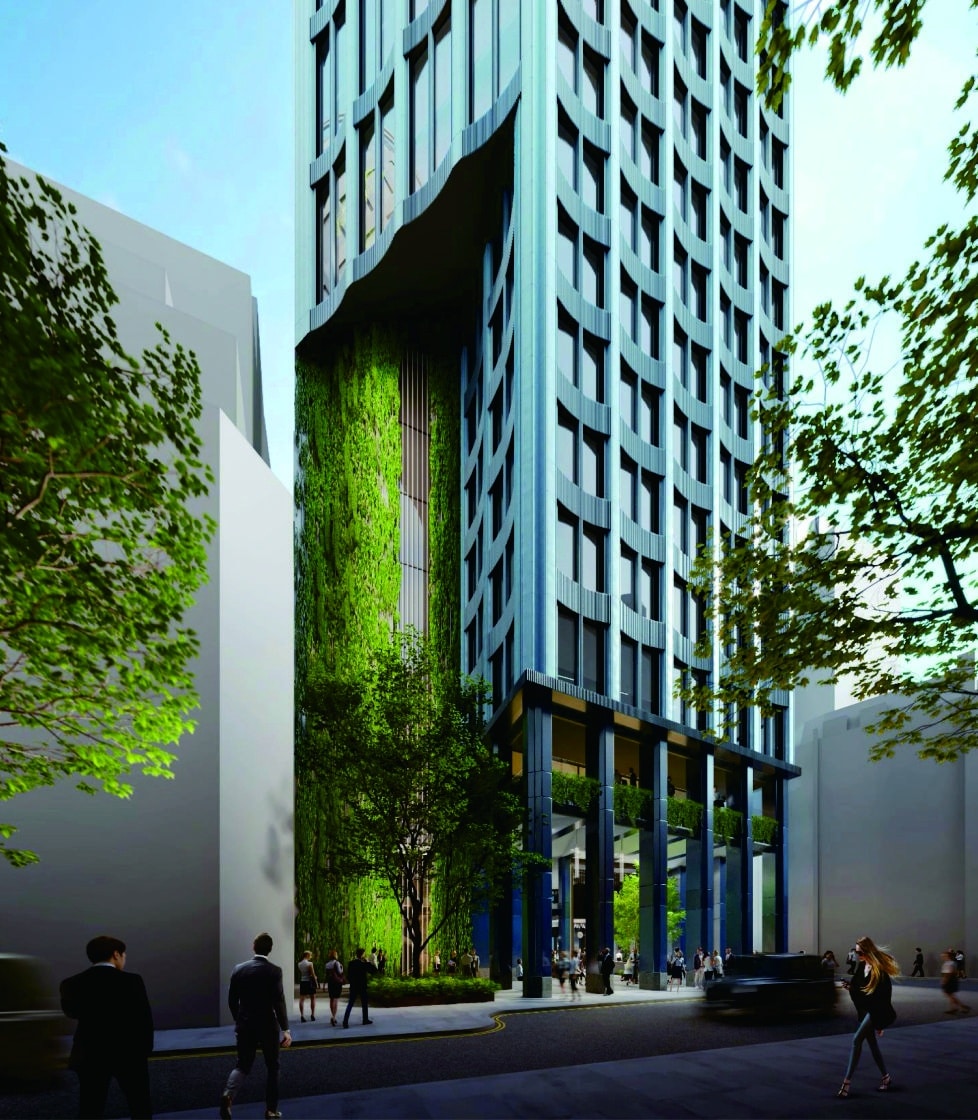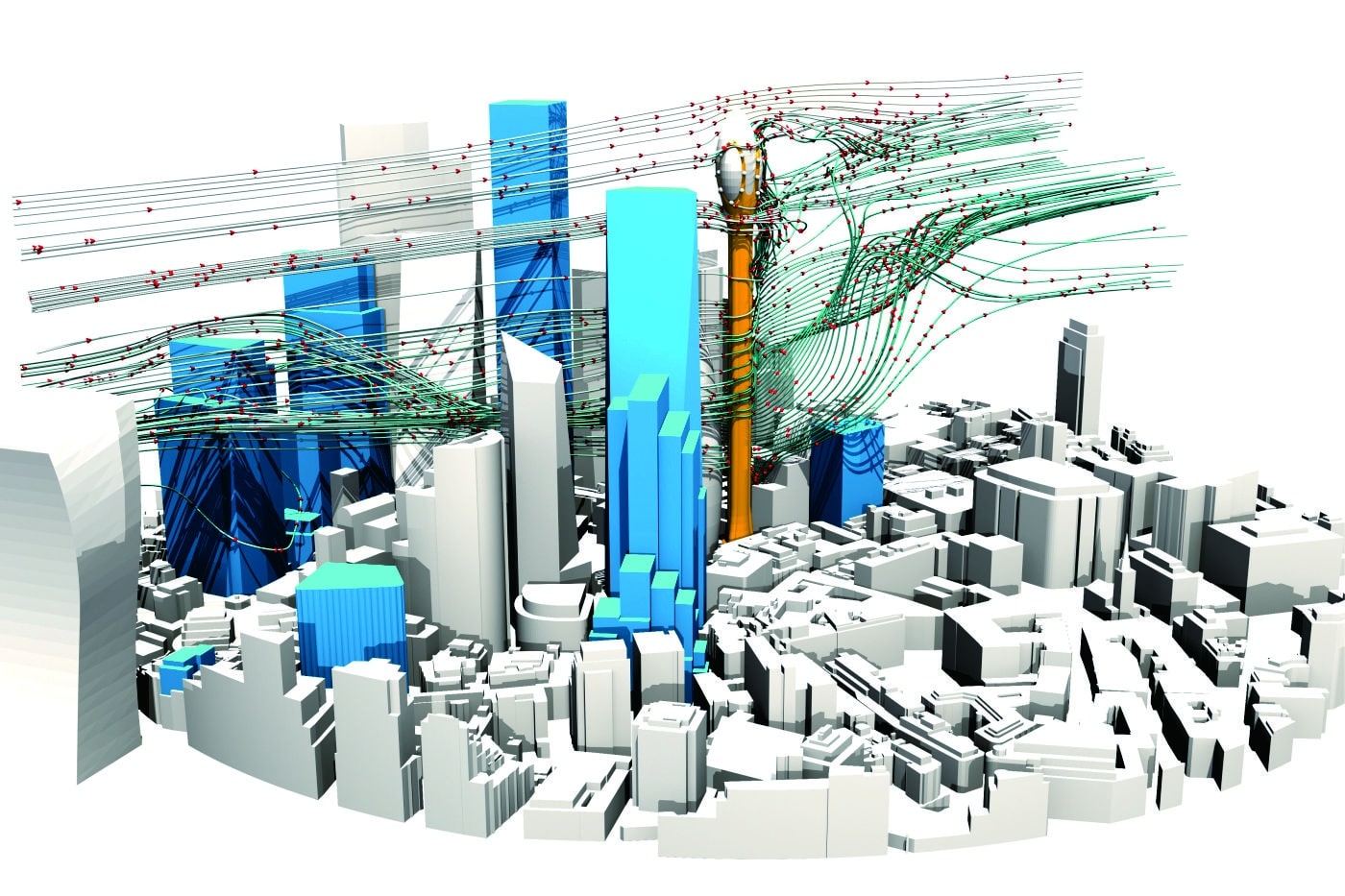Wind Microclimate: The City of London Requests Both Wind Tunnel and CFD Studies
Posted on 22 December 2020
With the number of tall buildings in the City of London growing, an important factor to consider in the planning stage is maintaining or creating a safe and comfortable urban environment for all. London City has recently paid particular attention to this issue, requiring developers to address the wind microclimate issues at an early design stage by incorporating effective wind mitigation measures into the design.
Ms Yiqing Wang, a senior engineer at Windtech Consultants’ London office says: “Putting the comfort and safety of cyclists and pedestrians first, the City of London Corporation published the UK’s first wind microclimate guidelines that are expected to create a blueprint for others by delivering safer, more enjoyable streets that meet the evolving needs of the City. The City of London Wind Microclimate Guidelines has stringent requirements especially for tall buildings that are above 100m in height. Where both wind tunnel and CFD (Computational Fluid Dynamics) are required, the two wind modelling approaches must be carried out by independent consultants.” The new requirements are outlined in the table below.

The new requirements challenge the norm, as most researchers in the industry would attest to physical testing in a wind tunnel being the only way microclimate can be measured accurately, due to the ability to simulate the complex turbulent flow regimes physically. However, it is important to note that the microclimate comfort criteria adopted by the City of London relate only to mean wind speeds, which by its nature closes the accuracy gap between the wind tunnel testing and CFD. In addition to this, CFD provides continuous contours of wind speed rather than predefined or discrete points as is the case with a wind tunnel test. Further, providing results for CFD and wind tunnel testing from two independent consultants allows for the removal of bias, given it is well known that CFD can be tuned if the result is a known quantity.
In addition to a requirement to conduct both CFD and wind tunnel analysis, a modified version of the Lawson LDDC criteria, used for assessing mechanical comfort and safety has been produced. Yiqing Wang went on to say: “Previously acceptable business walking conditions have now been reclassified as uncomfortable, which is a welcome move given what we know of the business walking criterion. Moreover, for the first time in the UK, effects on cycling comfort and safety arising from wind microclimate are also considered.”
Below are two case studies, which show Windtech Consultants’ experience adhering with the new requirements, and provide some insight on the new control specified by the City of London.
Case Study 1: Bury House, 31 Bury Street – Wind Tunnel Testing

The Bury House development is a newly proposed skyscraper in the heart of the City of London. It features a sleek and slender design that aims to offer smaller office floorplates, which will benefit young and growing companies. The overall height of the building exceeds 180m and therefore an assessment for early massing options, a wind tunnel testing and a CFD study for detailed designs were required as part of the wind microclimate assessment.
Windtech Consultants first carried out the detailed wind tunnel assessment prior to the design freeze to assess the various massing options and their impacts on the wind microclimate on the ground floor. This exercise provided the design team with a set of robust results in the early design stage so that the most optimal design would progress to the detailed design stage. The wind tunnel testing was repeated later (post design freeze) with consideration for various configurations of future surrounding buildings to assess the wind impacts in the surrounding streetscapes. The CFD results provided by an independent consultancy were compared against Windtech’s wind tunnel results. These two sets of results combined provided a comprehensive understanding of wind effects around the site.
Case Study 2: The Tulip, 20 Bury Street – CFD Assessment

Windtech Consultants assisted during the design and planning application phase of the project, undertaking a pedestrian microclimate wind comfort analysis. In this case Windtech Consultants were selected to undertake the CFD study and the scope included assessing the effect of various future surrounds configurations. Windtech were able to carry out this work efficiently using the significant computational resources available to them. All pedestrian accessible areas within and around the site boundary were assessed according to the specified criteria listed under the City of London Wind Microclimate Guidelines, including public amenity areas, public/private terraces and private balconies.
Overall, the inclusion of the proposed development showed no considerable effects on its surroundings in terms of wind comfort for pedestrians. Only a few areas within the development showed some localised sections where occupants may be at risk of discomfort due to incoming wind from the prevailing south-westerly direction. Recommendations were made in order to satisfy the occupancy safety criteria in trafficable areas where the intended use did not satisfy the current wind speed criteria.
Comparison of Computational Fluid Dynamics and Wind Tunnel Testing
As a computer-based simulation, CFD assessment can produce widely different results when different methodologies, assumptions and parameters are used. Therefore, the accuracy of the CFD assessment is often questioned when the data is not robustly validated. At Windtech Consultants, our CFD analysis has been developed through regular validation studies against wind tunnel testing, ensuring a detailed and robust approach that produces highly accurate simulation results. The comparison between wind tunnel results and CFD show less than a 10% difference in wind speeds. Moreover, the robustness of our CFD results was also verified by the independent wind tunnel study carried out by another wind consultant for The Tulip project.
For further updates on scheduled events and feature projects, follow us on LinkedIn at: https://www.linkedin.com/company/windtech-consultants.
For more information on our capabilities in the Wind Tunnel Testing and/or CFD space, please reach out to any of our global offices at: https://windtech.com.au/contact-us/.
Related Articles:
Return to Main News Page










